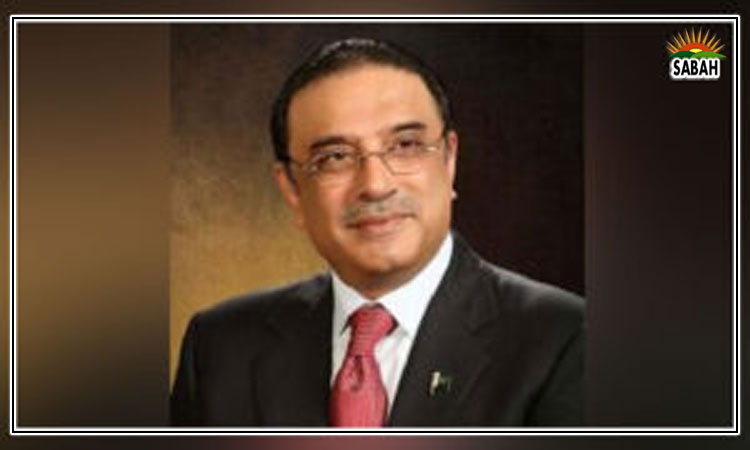How to review a central bank…Dr Khaqan Hassan Najeeb
The Australian government initiated an independent Review of the Reserve Bank of Australia (RBA), on July 20, 2022. The Review panel handed its report to the government within a short period of time on March 31, 2023.
The review along with the governments response by the treasurer was made public on April 20, 2023. The response stipulated the in-principle agreement of the government with the reviews recommendations. The government further decided to work with the RBA, parliament, and key stakeholders to implement the recommendations. This is how swiftly a reform should be carried out. It should be driven domestically and impartially, and straightaway put for implementation. A valuable case in point for authorities in Pakistan and elsewhere of a well-executed reform.
The RBA Review was premised on the sensible stance that the central bank needs to develop stronger frameworks, tools, processes, and expertise. The objective was to transform RBA into an organization Fit for the Future. To remain effective and transparent, institutions and bodies, whether independent or not, need periodic, independent, and external reviews. A health check of institutions is a good idea a critical lesson for Pakistan. Organizations in Pakistan tend to shy away from being reviewed even when the intention is to strengthen their own working.
The review panel for the RBA was small (three members), independent, and highly distinguished. It had a former Canadian central banker and an academic of international standing in monetary policy, along with a leading Australian academic on macro-econometrics and a professor of economics. Both these ladies, along with a former professor of economics and now Australian secretary for public-sector reforms, consulted 1,500 stakeholders who contributed to this process, along with the RBA governor and shadow treasurer. The focused and professional composition of the panel helped give credibility to the review a key takeaway for Pakistan authorities while forming committees and commissions.
It is inspiring to see the resolve of the Australian government to work with the RBA, Australian Council of Financial Regulators, and other stakeholders to enforce the 51 recommendations of the Review. The government has signaled its intention to move ahead in a cooperative and constructive way. Realizing the value of the RBAs independence, the government feels the support of the opposition is necessary to push through some of the recommendations through legislation.
The Australian shadow treasurer remains part of the review process all along. A key learning for Pakistan’s polity is the way in which the Australian government has choreographed reform by building a coalition to implement legislative, policy, and structural changes to make the RBA a truly great institution. It is time for us in Pakistan to work as a nation with a collaborative rather than an antagonistic approach.
The review report acknowledged the contribution of the RBA to the economic growth of Australia. It recognized that the RBA is a well-regarded organization, with good-quality dedicated staff. However, it identified a number of critical areas that need to be strengthened.
Five key themes have been suggested for improvement. They include a clearer monetary policy framework, with well-defined objectives, tools, and a financial stability role. A stronger monetary policy decision-making and accountability, supported by a more expert monetary policy board backed by better processes and greater transparency and accountability in decision-making. An open and dynamic RBA, with a more agile and enabling culture and more open and constructive debate. The need for more robust corporate governance, including the establishment of a new governance board to support and oversee management. The last key theme focuses on steps to ensure RBA leaders drive institutional and cultural change and that they are accountable for delivering. These are probably the deepest reforms being suggested since the reform of floating the Australian dollar.
The review in its specific recommendations under the theme of clarifying the monetary framework suggests the need to move to a dual mandate of price stability and full employment. It points to striking a balance between controlling inflation and supporting employment, in both the short and longer terms. In another recommendation, to further refine the inflation targeting regime, the review stresses that the current terminology of returning inflation between two and three per cent on average over time is vague and in need of radical change. It suggests for the RBA to explain how quickly it is aiming to return inflation to around the midpoint of the target, its assessment of full employment, and how if at all, financial vulnerabilities or other considerations have factored into its judgment. These are ideas that in any country’s context may be debated threadbare for application. They point to a broader mandate of the central bank and the need for specificity in inflation targeting.
Economic developments in Pakistan over the last few years have stressed monetary policy arrangements and working of the central bank. Against this backdrop, the focus of the public and business community on monetary policymaking has intensified. The central bank with a long standing of qualified people has tried to be a source of stability in these testing times.
However, the most recent review of the IMF for Pakistan highlights that the monetary policy may have fallen behind the curve, as inflation has increased to a five-decade high – much beyond stipulated targets. Concern has also surfaced over the targeting of concessionary lending practices and the spurt in unemployment now estimated to cross eight per cent of GDP. These raise fundamental questions about due diligence and the need for a richer suite of models and data, which could improve the judgment around big decisions.
The longer-term trends of the economy remain quite challenging. Pakistans economy is mired in an environment of inept regulation, weak financial penetration, low innovation, and waning productivity. The country undisputedly needs the most effective central bank and monetary policy framework to meet current and future economic complexities. A central bank that can effectively deal with the daunting issues of the time including financial stability; financial inclusion; payments policies and currency reform.
Major central banks view the production of quality research as an integral part of their mission. They prioritize and devote substantial resources to research. It enhances the organizations human capital and improves the quality and defensibility of decisions. The State Bank of Pakistan (SBP) has no doubt made strides in this area. One would like to see the SBP present its findings at major applied macroeconomics conferences of central banking researchers. One would like to see it near the global frontier in these conferences and less dependent on reform driven primarily by international organizations.
Strengthening the monetary framework can surely lift both local and international confidence in the central banks work. A strong foundation and strengthened SBP governance and decision-making processes can help overcome the existential economic challenge as we strive to promote the economic welfare of the people of Pakistan.
The Australian experience of reviewing the RBA underscores the enormous benefits of undertaking external reviews of key organizations without infringing on their independence. We learn that an external review of organizations is not to be viewed as a critique of the organization but as a path to new ideas and improved opportunities to further strengthen it.
Many times, there is a need to break the traditionally insular and secretive culture of organizations. Several critical national institutions in Pakistan are crucially in need of renovation. I am confident that independent reviews can provide an outstanding blueprint for such renovation.
Courtesy The News












